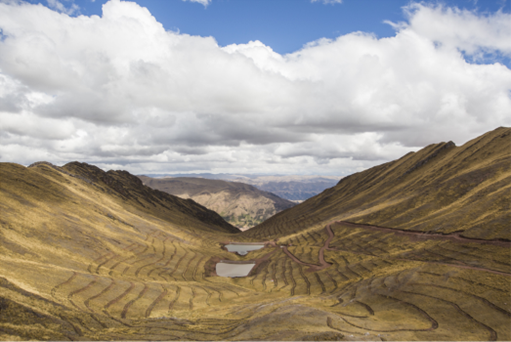FOR LASTING CHANGE, WE NEED COMMITMENT FROM THE WHOLE CHAIN
No food can be produced without fresh water. Given that our fresh water supply is diminishing, we need to carefully manage our scarce supply in order to achieve a future where nobody goes to bed hungry. That is why the theme of this year’s World Food Day is ‘Water is life, water is food, leave no one behind.’ Simon van Meijeren, programme advisor at Partners for Water, tells us how two Partner for Water projects in South America reflect this theme.

European countries import fruits and vegetables from countries such as Chile and Peru where water availability is a concern. ‘As a result, we are basically extending our water demand overseas’, says Simon. ‘This means that efficient water usage over there is also a responsibility for us over here. That is why we support collaborative processes that aim to improve production value chains in countries like Chile and Peru.’
Market transformation process
In Chile, Partners for Water works in the Aconcagua valley together with Dutch and Chilean partners. This valley is a major source of fruits such as avocados, that get imported to the Netherlands. However, the area experiences droughts and has limited water supply, putting a strain on both production and the local ecosystem.
Simon explains: ‘The first steps taken in this collaborative project consisted of hosting a series of webinars in 2021, bringing together a wide range of parties who were either active in the fruit sector or contributing to sustainability efforts down the value chain. Detailed insights about the valley were gained through a catchment-passport: a document that provides a scientific, specific and clear description of the local water situation and key challenges.’
At the same time, a local network of producers and relevant actors called ‘Red Aconcagua.’ was established. The network develops a strategy for achieving sustainable water supplies in the valley and provides guidance on the first practical steps needed to realise this. ‘We will map the water footprint of various producers and identify ways to reduce it. In addition, a market transformation process will begin bringing together international value chain partners such as large exporters and retailers in order to form a shared vision on Aconcagua and determine the first steps necessary to make the value chain more sustainable. By doing this, we are engaging with both local and international stakeholders on a shared sustainability mission.’ says Simon.
Water stewardship
‘We’re focusing on similar issues in Peru with the Water Stewardship project’, Simon adds. ‘There, a coalition of retailers, traders, governments and social initiatives have come together to make the fruit and vegetable value chain more resilient by, for example, strengthening the catchment’s water cycle, conserving biodiversity, reducing soil runoff and improving community livelihoods.’
These initiatives are incorporated into an overall water stewardship plan for the area. ‘The strength lies in scaling up water solutions together reducing costs that you would incur if you tried to address water risks in your value chain on your own’, Simon explains.
Collective action
These two projects differ in terms of their approach: ‘In Chile we started from a shared vision’, Simon says. ‘We formed a coalition and gradually built up trust through developing and executing joint plans together. Whereas in Peru, the coalition already existed. We started with a collective action through interventions and cooperation. This enabled us to build trust in order to develop a shared ambition and a long-term plan. We built the relationship by doing.’
What these projects have in common is their key success factor: involving the whole value chain. ‘To realise lasting positive change, every party of the value chain needs to contribute. From producer, importer, retailer to consumer.’ Simon says
Raising awareness is crucial to achieve this: ‘Ask yourself what part can you take responsibility for. Retailers need to ask for a product which is sustainably produced and consumers must value this by paying a fair price. A producer needs to ask: do I want to generate maximum output in a relatively short time, or do I want to produce less, more sustainably, so that I can continue production twenty years from now? With collective action, things can really change’, concludes Simon.